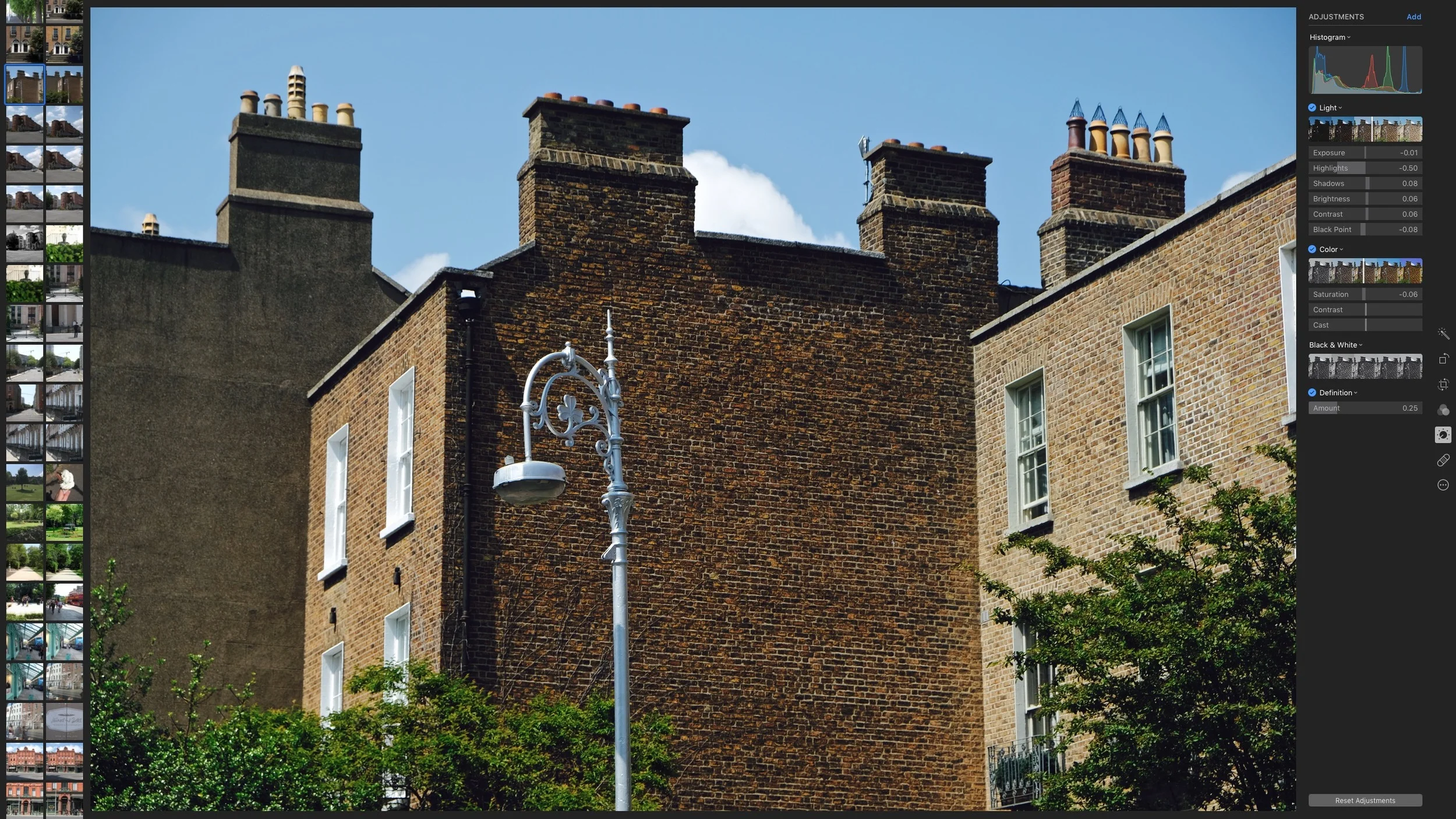Coming in iOS 10 and macOS Sierra For Photographers
Apple teased some interesting developments at last week's WWDC that will have a particular impact on photographers. It showed off some impressive scene and face recognition technology running on iOS as well as some new ways to organise your photos. Perhaps the biggest new feature though was one that wasn't really unveiled during the keynote. It snuck into the background of a slide, which got keen observers excited, and was later confirmed to be true. IOS is getting the ability to capture RAW photos, directly from your device’s camera.
I actually wrote abut this a while ago. I had written a blog post about the 5 features that I most wanted to see for Photographers in iOS 10. While I only got one right, it's great to know that it's coming. It's unclear at this stage if RAW capture will come to the default camera app, or it will only be something that third parties can implement. Even if that is the case, there are plenty of really good camera apps out there, so I'm sure some of our favourites will probably get RAW support. RAW files will be captured in Adobe’s DNG format which should make the files easier to read in third party applications.
I'm really curious to see what the iPhone's camera is really capable of when we get RAW support for it. At the moment, good and all as the iPhone's camera is, it's limited by having a strict JPEG output, with no changeable parameters. Even in third party applications, they can't really alter the image quality settings that the camera uses other than file size. There's no way to affect noise reduction, sharpening and so on, which are all parameters that can greatly affect an image. I can't wait to see what kinds of quality is possible with some more advanced software based raw decoding.
Faces and Places V2.0 ?
The other big features announced at WWDC are about new ways to organise and categorise your images. Back in Aperture and iPhoto, Apple had implemented a face recognition system called "Faces" and a map based way of locating your images called "Faces". Both of these are now coming to iOS only without the names. What's more, Apple is implementing the actual image processing for these features on your actual device, which just goes to show how far we've come.
They're also using some advanced scene recognition too, to automatically detect features in your images. For example, if you have photos of a car, it will know that there is a car in the photos. This means that when you search for car, you won't have had to manually tag your images with "car" in order for the software to find it. The scene recognition will do all the work for you. This technology isn't new. Flickr and Google have similar features on their respective services. Adobe even has a beta of scene recognition which you can use on the web version of Lightroom mobile. Where Apple differs from the competition however, is that it is doing all the computation locally on your device, which given the amount of calculations involved, is pretty impressive. This also means that the results are completely private. Form what I gather all these features are coming to the Mac version of Photos too.
The other major feature that Apple showed off was what is being called "Memories". Basically, the phone (or iPad, or Mac) will group your images together based on location, and people in the shot to create a "memory". This seems a little gimmicky to me, but I'll be happy to be proven wrong. For families with kids, I'm sure this will be a useful new feature, but I'll hold off any opinion until I see it in action.
While there wasn't a huge amount of new features aimed at photographers at WWDC this year, the few that were announced are kind of a big deal. This especially goes for the ability to capture and process RAW files. I'm sure as we get closer to the final release, we'll learn more details about this and any other hidden features.
I've embedded the Keynote below, cued up to start on the Photos section, so just press play!
Help Support the Blog
All of the work I do here, and the information on this blog is done entirely free of charge and takes up quite a bit of work. I want to spend more and more time on this blog, and offer more and more of this kind of information, tips and so on, so If you like what I'm doing here and want to show support, then you can do so by buying something from my Digital Download Store. I have Lightroom Presets, and e-books all available for download.
If you're a Fuji X-Trans shooter and Lightroom user, check out my guide to post processing X-Trans files in Lightroom. I also have a guides for processing X-Trans files in Capture One and Iridient Developer.
If you want to get regular updates, and notices of occasional special offers, and discounts from my store, then please sign up for the Newsletter.







